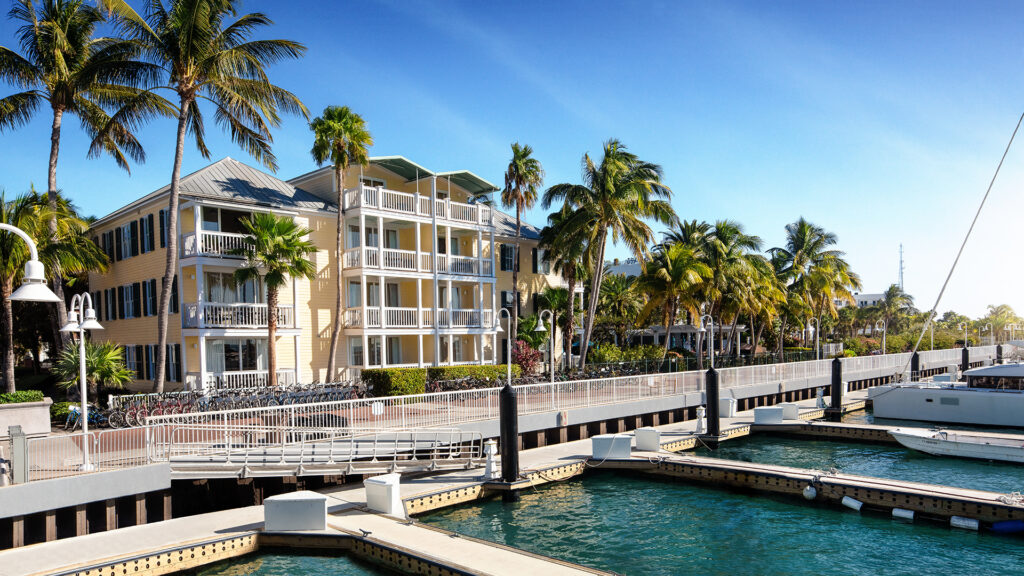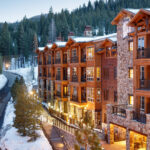Hyatt Vacation Club offers a blend of flexibility and luxury for travelers seeking unique vacation experiences. Whether you’re new to the concept of vacation ownership or considering adding Hyatt Vacation Club to your portfolio, understanding how the program works can help you maximize your enjoyment.
Here’s an in-depth look at what Hyatt Vacation Club offers, how it operates, and why it could be a valuable addition to your travel lifestyle.
What Is Hyatt Vacation Club?
Hyatt Vacation Club properties in the collection that they purchase. This approach moves away from traditional fixed-week timeshares and instead allows members to design vacations that fit their schedules and preferences.
Heritage Collection vs Platinum Collection
Heritage Collection
Formerly known as Hyatt Residence Club
Platinum Collection
Rebranded Welk Resorts & other resorts
Under the Hyatt Vacation Club umbrella, there are two separate products that Hyatt has sold, which are completely separate ownership types. They use different point systems, and allow access to different resorts.
One points system, formerly known as Hyatt Residence Club, uses a range of points from 1,000 to about 5,000 points and allows owners to access what is known as the Heritage Collection of resorts.
The other points system uses points ranges of 60,000 to upward of 1,000,000 points, and allows owners to access the Platinum Collection of resorts.
The most common listings on the resale market are for the Heritage Collection. The majority of this article will cover the finer points of owning and using that vacation ownership product (previously known as Hyatt Residence Club), but be aware there are actually two different point systems under the same brand name, which have access to different resorts.
Now, let’s take a closer look at the different resort collections offered by Hyatt Vacation Club.
Hyatt Vacation Club Resorts – Heritage Collection
When purchasing an ownership on the resale market, you can access any resort in the Heritage Collection shown below:
Platinum Collection Expansion with Welk Resorts
Hyatt integrated Welk Resorts into the club, which expanded the list of destinations available to owners of the Platinum Collection. There are now technically over 20 Hyatt Vacation Club locations, but they are split into two different collections. Here are the resorts that are accessible to owners of the Platinum collection:
- Hyatt Vacation Club at Desert Oasis
- Hyatt Vacation Club at Northstar Lodge
- Hyatt Vacation Club at Sirena del Mar
- Hyatt Vacation Club at The Lodges at Timber Ridge
- Hyatt Vacation Club at The Ranahan
- Hyatt Vacation Club at The Welk
- One Village Place Residences
- The Residences at El Corazón de Santa Fe
As you can see above, the Platinum Collection does incorporate Hyatt Vacation Club at Northstar Lodge from the Heritage Collection, but this is the only shared resort between the two collections. The remaining sections of this article will talk exclusively about the Heritage Collection, and how that points system works.
How Hyatt’s Points System Works
A key component of Hyatt Vacation Club ownership is the points system, which offers a structured framework for booking accommodations while still providing flexibility. The program operates through three primary systems for points usage and reservation opportunities:
Home Resort Preference Period (HRPP)
For owners with fixed weeks, the Home Resort Preference Period (HRPP) plays a critical role. During this six-month period, beginning one year before the owner’s specific week, they have the option to reserve their fixed week and unit at their home resort. This decision allows owners to secure their preferred vacation time well in advance.
If the owner chooses not to reserve their week, any unused points automatically transition into the Club Use Period (CUP). The HRPP ensures owners retain first priority for their deeded week while providing flexibility to explore other travel possibilities if desired.
Club Use Period (CUP)
The CUP system provides even more flexibility for owners. Once points transition into this period, they can be used to book stays at other Hyatt Vacation Club resorts. Owners can browse available destinations via the reservation system and finalize bookings with a modest transfer fee of approximately $40.
Owners also have the option to place requests for desired stays up to 18 months in advance. When a match is found, the reservation is instantly confirmed, offering a seamless experience without the need for additional decision windows like those found in external exchange systems.
CUP points must be used within a specific timeframe, as they do not carry over to the next year. Owners can maximize their benefits by actively managing their reservations during this period.
Limited Club Use Period (LCUP)
The LCUP serves as a final opportunity to utilize unused points before expiration. These points can be used for short-notice reservations—up to 60 days in advance—but availability is often limited, typically featuring off-season options.
To avoid losing value, owners should prioritize utilizing points during the CUP period or transferring them into the Extended Exchange (EEE) system for added flexibility.
Extended Exchange Opportunities
Through Interval International, Hyatt Vacation Club owners can transfer CUP points into the Extended Exchange (EEE) system. This feature allows owners to exchange their points for stays at non-Hyatt properties, broadening their travel options. However, it’s important to note that Hyatt-to-Hyatt exchanges must be handled through the exclusive Hyatt system and cannot occur via Interval International.
This added exchange benefit creates opportunities for members to explore a wide variety of vacation destinations while still enjoying the value provided by their Hyatt membership.
How Many Points Do You Need?
Determining the right number of points depends entirely on your vacation habits. Staying at a resort in a high-demand location or during holiday periods will cost more points than visits during off-peak seasons. Similarly, larger accommodations or extended stays will require additional points.
Below are the Hyatt Vacation Club points charts, but you will still need to determine which weeks at your desired resort are within each season.
In the resort section above, there are links to each resort’s points charts that show which week numbers are in each season. You can click on a few resorts that interest you to get an idea of how many points it takes to travel to each destination at your desired time of year.
Planning ahead and understanding your preferences is key to maximizing your value within the Hyatt Vacation Club system.
Costs Associated with Ownership
Hyatt Vacation Club ownership involves a few different costs outside of the initial purchase price. Here are the following on-going costs of Hyatt Vacation Club (formerly Hyatt Residence Club):
- Annual Maintenance Fees
The amount of annual maintenance fees you’ll pay is determined by which specific resort you own as well as the unit size and type you are deeded to. - Resort Reserves
Reserves are used for resort replacement costs in order to prevent sudden changes to maintenance fees when disasters happen. This cost is also dependent on which resort you own at. Many other vacation clubs just hide this cost in the total maintenance fee, but Hyatt Vacation Club is very transparent in listing the exact amount in reserves each year. - Property Taxes
This cost is also dependent on which resort you own at, and is itemized on maintenance fee bills unlike other vacation clubs which lump this into the overall maintenance fee bill.
- Club Dues
For 2025, there is a $157.00 annual club fee which is assessed to all owners.
For those financing their ownership, loan costs will also factor in. The exact price varies depending on the number of points purchased or the property owned, but if you’d like to shop our current selection of Hyatt Vacation Club listings you can click the button below.
Benefits of Hyatt Vacation Club Membership
One of the most appealing aspects of Hyatt Vacation Club is the variety of resort destinations available to members. Whether you’re looking for beachfront relaxation, mountainside adventure, or city convenience, there’s a Hyatt resort tailored to your needs. Popular locations include the Hyatt Vacation Club at Beach House in Key West, the Hyatt Vacation Club at Kaanapali Beach in Maui, and the Hyatt Vacation Club at Highlands Inn in Carmel-by-the-Sea.
Membership also comes with access to Interval International, a vacation exchange network. Through Interval International, owners can trade their points or weeks to stay at resorts affiliated with other top timeshare brands like Marriott Vacation Club and Disney Vacation Club, expanding their travel possibilities even further.
Saving on Ownership
Those interested in Hyatt Vacation Club ownership can also explore the resale market to save on initial costs. Purchasing a timeshare on the resale market offers the same high-quality ownership experience at a fraction of the original price. However, it’s crucial to work with trusted resale brokers to ensure a smooth and secure transaction.
Final Thoughts
Hyatt Vacation Club is designed to offer flexibility, luxury, and memorable vacations for its members. By transforming traditional timeshare ownership into a points-based system and integrating additional benefits like vacation exchanges and unique experiences, Hyatt has created a program that caters to a wide range of travel preferences.
Whether you’re considering becoming a member or simply exploring your vacation options, Hyatt Vacation Club offers an opportunity to enjoy high-quality stays and exceptional destinations globally. With careful planning and a clear understanding of the program, you can create a lifetime of unforgettable travel experiences.
Feel free to contact our team of Licensed Real Estate professionals who specialize in Hyatt Vacation Club timeshares for a free consultation.





















